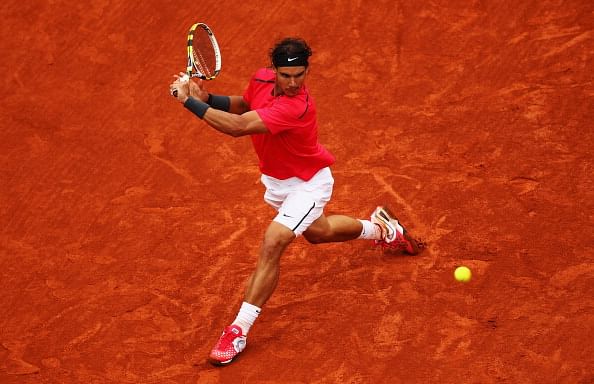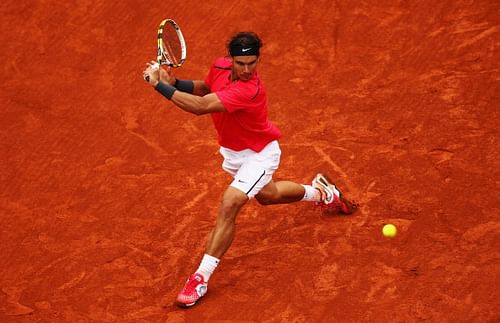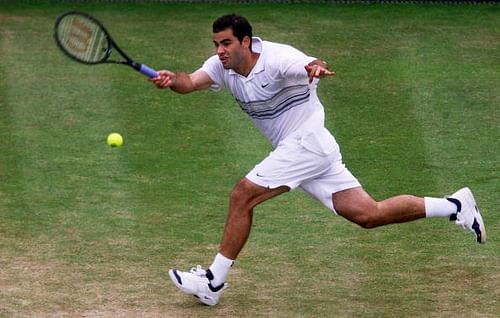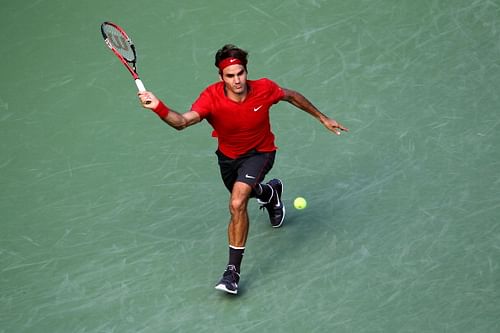
The surface greats
Tennis is a game synonymous with athleticism, grit, stamina and above all adaptation. Over the course of time, the game has evolved immensely in playing conditions, game style, and above all, the surface on which the game is played on. Players like Bjorn Borg, Jimmy Connors, Ivan Lendl, Roger Federer, Pete Sampras, John McEnroe, Andre Agassi and Rafael Nadal have graced the game and set the courts on fire. When comparing the greats of this game, it’s impossible for someone to pick a player amongst these greats and adjudge him the greatest, considering that every era had their different play styles, environment, financial constraints and challenges.
Since the advent of the Open Era, the game has been predominantly played on three surfaces: clay, hard court and grass. The most prestigious tennis events are called the ‘Grand Slams’ – The Australian Open (hard court), The French Open (clay), Wimbledon (grass), U.S open (hard court) are played on the respective surfaces. Looking at the past and present, we will see that the greats of game have been hugely successful on some surfaces and have struggled on some others. Let’s look at these surfaces and the players who dominated them and figure out the ‘Surface’ Greatest.
1. Clay court (Rafael Nadal)

Clay courts are relatively slower than the grass and the hard courts, making it difficult for players to hit winners, extending the rallies and making it physically taxing for the players. Thus, this surface is favourable for a player who posses bundles of stamina, a heavy baseline game and a knack of producing important winners. One of the most important aspects for succeeding on clay is the sliding technique on the surface which helps a player to check his momentum while running on a rigid surface and helping to tackle the drop shots which is a big weapon to falter the baseline game of the opponent along with bringing an element of surprise against the run of play.
There have been very few players who have been able to dominate on this surface as it is considered the hardest surface to play on and is physically very demanding. Players like Bjorn Borg, Ivan Lendl, Gustavo Kuerten, Mats Wilander and Rafael Nadal have come and dominated this surface.
When it come to the greatest, the tug of war is always between Bjorn Borg, a 6-times winner and Rafael Nadal, a 7-times winner. Bjorn Borg, a long-haired Swede, took the tennis fraternity by storm. He defied all the odds and captured the trophy 6 times with his impeccable baseline game, athleticism and never ending stamina.
Rafael Nadal is arguably the greatest clay court ever player as it is impossible to look beyond this human machine. Rafael Nadal has won 11 Grand Slams, out of which 7 are French open. A 51-1 win/loss record at French Open and the longest winning streak of 81 matches on clay, reflects his domination on this surface. Nadal generally plays an aggressive, behind-the-baseline game founded on heavy topspin ground-strokes, consistency, speedy footwork and tenacious court coverage, thus making him an aggressive counter-puncher. Known for his athleticism and speed around the court, Nadal is an excellent defender who hits well on the run, constructing winning plays from seemingly defensive positions. He also plays very fine dropshots, which work especially well because his heavy topspin often forces opponents to the back of the court.
At just 26, he is at the peak of his game and is expected to win a lot more Grand Slams and has already surpassed the most number of French Open titles won by any player, a record held earlier by the great Bjorn Borg, and further strengthened his claim as the greatest clay court player ever and one of the greatest tennis players.
2. Grass court (Pete Sampras)

Grass is the fastest surface amongst all the surfaces. The pace and the bounce of the surface depends on the quality of grass used, the wear and tear and its maintenance. The duration of points is small because of the fast nature, low and uneven bounce of the surface, because of the grass and it’s slippery nature, the ball travels fastest on grass. The most effective and traditional style of play on grass has been the serve-and-volley, serving the ball wide of the court and advancing to the to net diminishing the angle and volleying the ball from near the net onto the opponents half giving the opponent minimum time to return the ball. This technique works very well with accurate serving on both sides of the “T”. In order to make the rallies longer and match more interesting, the courts were tampered post-2001 to make them slow so that game can be dominated from the baseline, and the serve-and-volley started to become a rarity since then.
There are many names who come into our mind when we talk about grass and Wimbledon, but there were some who were above the other in the pecking order. Some of the notable mentions being Bjorn Borg, John McEnroe, Pete Sampras, Roger Federer and Boris Becker.
Talking about grass and talking about Wimbledon, there are 3 players who directly come to our mind – Bjorn Borg, Pete Sampras and Roger Federer. Bjorn Borg, the flamboyant Swede, took the tennis world by surprise by dominating Wimbledon which was never done before in the Open Era, winning it 5 times consecutively between 1976-1980. The more surprising fact was that he did it without the famous grass technique of serve-and-volley, which was the name of the game at the time, dominating the game from the baseline with his powerful groundstrokes.
Roger Federer is arguably the greatest tennis player of all time, with 17 Grand Slams titles and 7 Wimbledon titles. He burst onto the scene as a 19-year-old beating then 14-times Grand Slam winner Pete Sampras on his most favoured surface with blistering groundstrokes and impeccable service. He holds the record for most number of consecutive Wimbledon titles along with Bjorn Borg and still plies his trade in the world of tennis with unbelievable success.
One of the greatest ever players, Peter ‘Pete’ Sampras was born to play on grass courts. A lethal serve, brilliant serve-and-volley game, domination from the baseline, second serve, ability to churn aces when required – he had it all to dominate this surface and he did it, winning the Wimbledon 7 times out of 8 years from 1993-2000 and etching his name as the best in business. He still holds the record of being ranked No.1 for 6 consecutive years from 1993-1998, a feat which is unimaginable in this competitive era of Tennis.
Sampras was an all-court player who would often serve-and-volley. Possessing an all-around game, in the early years of his career, when not serving, his strategy was to be offensive from the baseline, put opponents in a defensive position, and finish points at the net. In his later years, he became even more offensive and would either employ a chip-and-charge strategy or try to hit an offensive shot on the return and follow his return to the net.
He was known for producing aces on critical points, even with his second serves. He had an accurate and powerful first serve, one of the best of all time. His second serve was nearly as powerful as his first, possibly his most dangerous weapon. He had great disguise on both his first and second serves.
Sampras was able to hit winners from both his forehand and backhand wings from all over the court. He was also especially known for having arguably the best “running forehand” of all time. He was able to catch attacks wide to his forehand using his speed and hitting a forehand shot on the run. When successfully executed, he won many points outright or put opponents immediately on the defensive, due to the extreme pace and flat nature of the shot. He also popularized the jump smash, or “slam dunk”, where he jumps and then hits the smash in mid-air.
In all he has won 14 Grand slams – 7 Wimbledon, 5 U.S open and 2 Australian open titles and a total haul of 64 career titles. He is one of the greatest ever to grace this game and arguably the greatest ever on Grass.
3. Hard court (Roger Federer)

Hard courts are made of rigid material, uniformly spread over the court, offering a much more consistent speed and bounce. They are relatively faster than clay courts but slower than the grass courts . Hard courts generally favour hard hitting players with a dominant baseline game.
The U.S Open uses the acrylic hard court whereas the Australian Open is played on a synthetic hard court which are just differentiated by the nature and the amount of sand, its size and the amount of paint used in the construction of the court. The hard courts are generally harder on body because of there rigid constituents.The Australian and U.S open, the first and the last Grand Slam of the year respectively, employ the hard courts.
Grass courts are the fastest and clay courts the slowest in pace. On one side, where clay is more physically demanding and grass more technical, hard court gives that balance where both the base line game and serve-and-volley can be played with relative success. We have had huge array of players who have dominated the surface with different techniques. John McEnroe with serve-and-volley, Ivan Lendl with his brilliant base line gameplay and lethal service, Pete Sampras with his powerful and aggressive strokes, Andre Agassi with his dominating game play and pressure on the opponents straight away.
Among all of these, we have Roger Federer, the Swiss maestro; arguably the greatest ever with 17 Grand Slam titles, 7 Wimbledon, 4 Australian Open, 5 U.S open and a French Open, and total of 76 titles. 9 out of 17 Grand Slams won by Roger have been on the hard court, showing his dominance and liking of hard courts.
He is a player with arguably no weakness in his game, brilliant deceptive serve, blistering forehand, top spin on his shots and a knack of producing shots out of nowhere with glimpses of greatness. He has a brilliant baseline play with dominant forehands and single-handed backhand, exceptional talent to stretch rallies and produce winners after winners. Along with that, he has a brilliant first serve with impeccable control enabling him to serve-and-volley which also makes him very unpredictable and above all, highly effective.
Roger Federer holds the record for most number of weeks (300) ranked No.1 by ATP. Also according to ATPWorldTour.com, Federer has a .833 win percentage on hard courts, after going 520-104 throughout his career. This is also the highest career mark among any player in history. He also holds the record for most Open Era men’s Australian Open titles won (four), shared with Andre Agassi. He also holds the record for most Open Era men’s US Open titles won (five), shared with Sampras and Jimmy Connors. Thus, Federer is the only male player to have won 3 different Grand Slams (4 Australian Open, 7 Wimbledon and 5 US Open) most in the Open Era. By winning the 2007 Australian Open, Federer won his sixth Grand Slam title in his last seven attempts, an Open Era men’s record. The volume of these records shows how consistent he has been on this surface and has been far ahead of anyone in the Open Era on hard courts. He is arguably the greatest hard court player.
Summarising the greatness of Roger in the words of Jimmy Connors-
“In an era of specialists, you’re either a clay court specialist, a grass court specialist, or a hard court specialist… or you’re Roger Federer.”